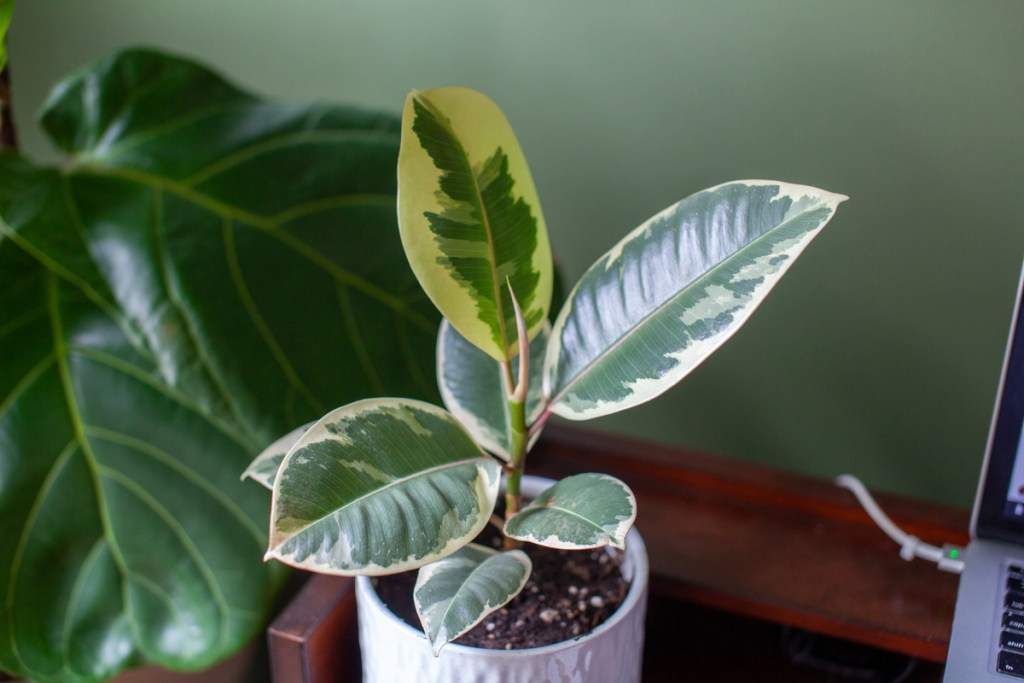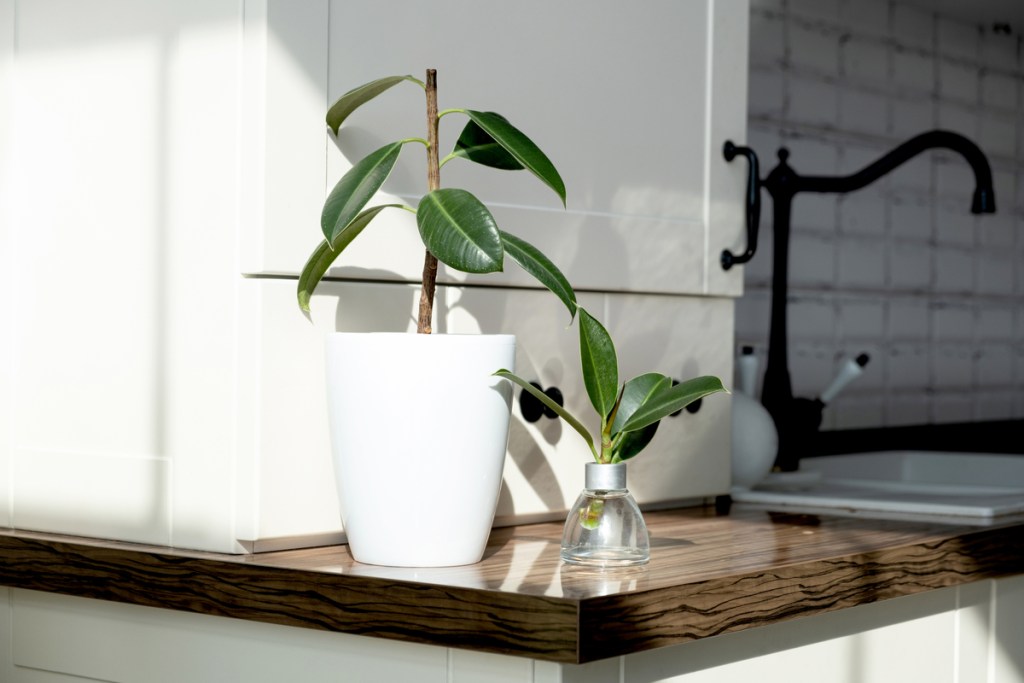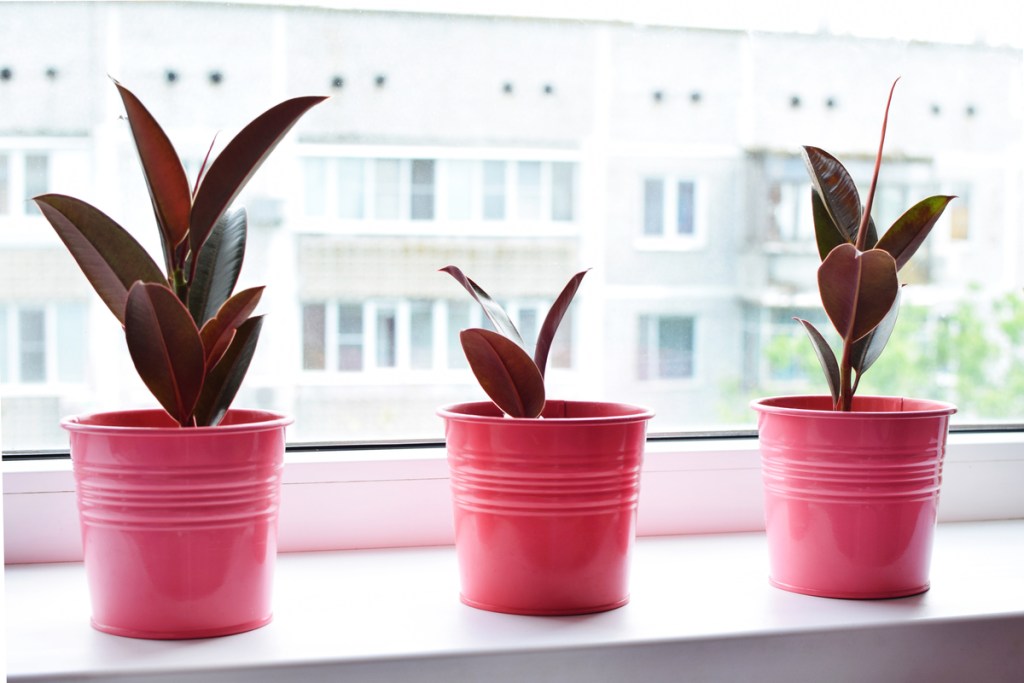Wondering how to propagate a rubber tree plant? You’re in luck! Rubber trees, also called rubber figs, are a lovely, popular plant native to several parts of southern Asia. These easy-to-care-for ornamental plants are Ficus elastica, not to be confused with Hevea brasiliensis, another plant commonly referred to as a rubber tree.
If you already have one, or if you know someone who is willing to share theirs, then you may want to know how to propagate it to produce more rubber trees. Don’t worry, the process isn’t complicated, and we’ll walk you through each step in this simple guide.

When should you propagate rubber trees?
Since most rubber trees are indoor plants, you can begin propagating them in any season. You may see better results when propagating in spring or summer, as rubber trees prefer warm weather. However, if you live in a region with mild or warm winters, you should be able to propagate year-round with little to no issue. If your region has cold winters, you can still propagate in fall or winter, but remember to keep your rubber tree away from drafts.
You should also wait until your rubber tree is mature to begin taking cuttings. This is best for the overall health of both the parent plant and the cutting. Some gardeners find it easier to pair propagation with pruning, since these indoor plants can grow fairly tall.

Taking a rubber tree cutting
Taking a cutting from your rubber tree is simple. Here's how to do it:
Step 1: Put on gloves or other skin protection.
Before you take your cutting, you should be aware that the sap of the rubber tree can be a skin irritant. Regular gardening gloves or gloves of similar thickness work well to protect your skin. Avoid using gloves made of material that will absorb sap, since it can be difficult to get clean.
Step 2: Choose a stem that is at least 6 inches long and has at least two leaves at the end as well as a leaf node near where the cut will be made.
Step 3: Using a sharp, clean knife or pair of shears, make one diagonal cut just below the leaf node.

Rooting the rubber plant cutting
Once you have your cutting, there are a few things you can do to encourage it to root. Here's what you need to do:
Step 1: Strip off any leaves that are close to the cut.
The cut end of the cutting will be underground or underwater, and so will any leaves near it. These leaves would begin to rot, leading to potential infection.
Step 2: Apply rooting hormone to the cut.
This is helpful but optional. Rooting hormone can speed up the rooting process, and is fairly easy to find at most garden supply stores. However, cuttings will root without it.
Step 3: Place your cutting roughly 2 to 3 inches deep in either water or soil.
Cuttings longer than 6 inches can be planted deeper. Cuttings rooted in water can take 12 weeks or longer to root, while cuttings rooted in soil take about half as long.
Step 4: Place the cutting in a warm location with bright, indirect light.
Step 5: Change the water once a week for cuttings rooted in water.

Caring for the rubber plant cutting
Here's how to care for your new rubber tree:
Step 1: Use regular potting soil to plant your cutting.
If you already have an adult rubber tree, you can use the same potting mix for your cutting.
Step 2: Keep the soil consistently moist.
Step 3: Place your cutting in bright, indirect light and avoid direct light.
Although adult rubber trees can tolerate some direct light, cuttings are more sensitive.
Step 4: Keep your cutting away from drafty windows or air conditioning vents.
Your cutting should have a full root system after a few months, and you should see signs of healthy growth by then as well. Propagating rubber plants is a simple, easy process. You can even propagate the same plant multiple times. Cuttings that have established root systems make great gifts, and, if you pair your propagation with pruning, you’ll also get the benefit of a smaller, more manageable rubber tree. Now you know everything there is to know about propagating your rubber tree plant.
Editors' Recommendations
- Everything you need to know about trailing succulents care for lush, thick growth
- How to pick the perfect orchid pots for healthy blooms
- Beyond basil and cilantro, add these unique plants to your indoor herb garden
- Beautiful, low-maintenance pothos varieties to add to your plant collection
- 5 easy-care spider plant varieties perfect for any home garden




